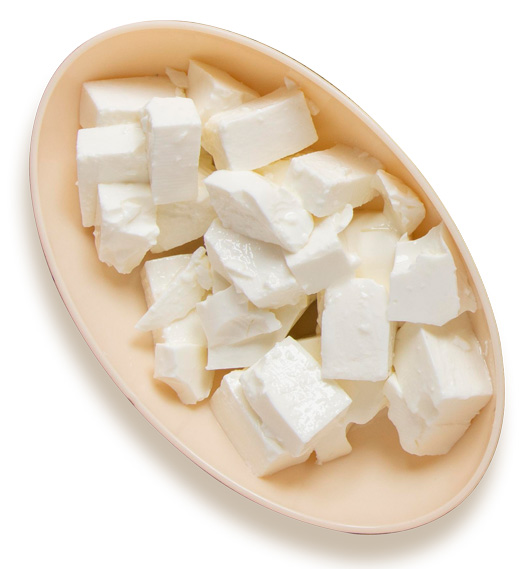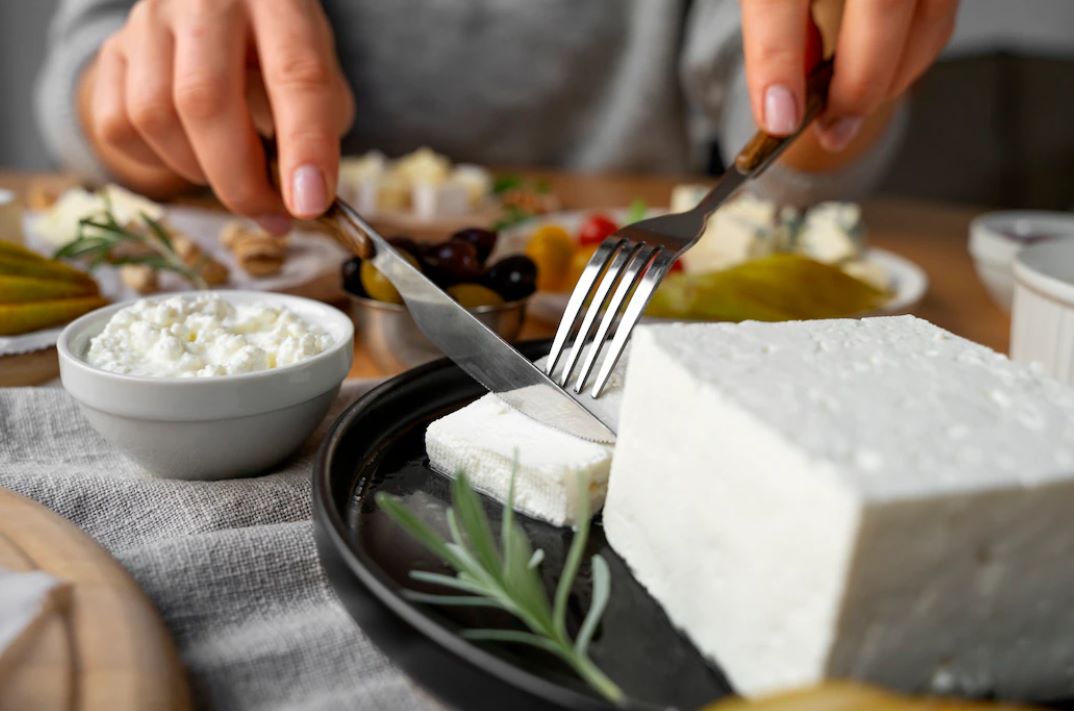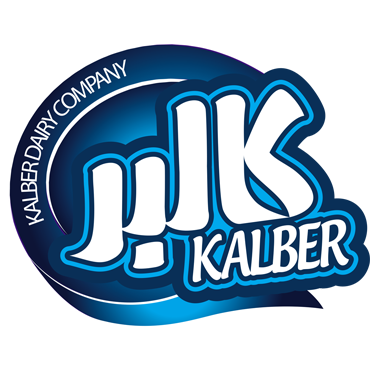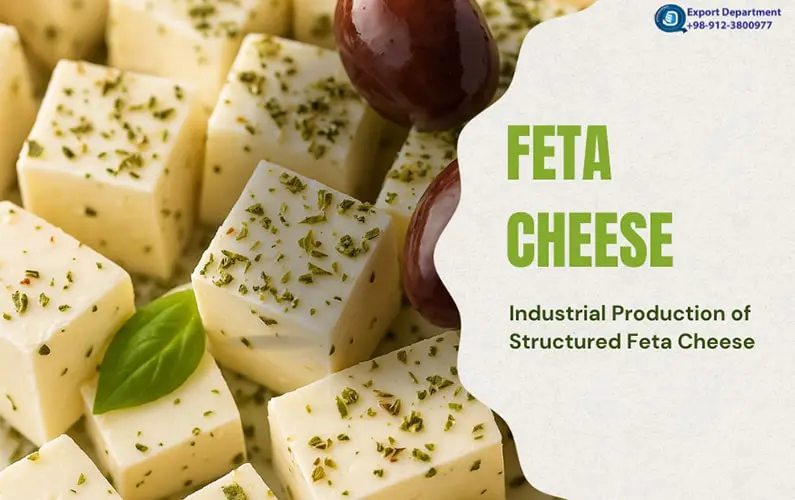From Creamy to Tangy: Comparing the Flavors and Characteristics of Labneh, Processed, Cream, and Feta Cheese
In this comprehensive comparison, we delve into the world of cheese, specifically focusing on Labneh, Processed, Cream, and Feta Cheese. We explore various aspects, including ingredients, nutritional composition, best brands, storage conditions, usage, taste, color, and flavor.
 In this comprehensive comparison, we delve into the world of cheese, specifically focusing on Labneh, Processed, Cream, and Feta Cheese (all kinds of kalber cheese). We explore various aspects, including ingredients, nutritional composition, best brands, storage conditions, usage, taste, color, and flavor.
In this comprehensive comparison, we delve into the world of cheese, specifically focusing on Labneh, Processed, Cream, and Feta Cheese (all kinds of kalber cheese). We explore various aspects, including ingredients, nutritional composition, best brands, storage conditions, usage, taste, color, and flavor.
We examine the ingredients used in each type of cheese. Labneh, for example, is made from Milk, Starter Culture, Enzymes or Rennet, and salt while processed cheese involves blending and emulsifying different types of cheese with additional ingredients. Cream cheese, as the name suggests, is made from cream, and Feta Cheese is traditionally made from sheep's, goat's, or cow's milk.
To help readers make informed choices, we highlight some of the best brands available for each type of cheese. These brands are known for their quality, taste, and consistency, ensuring a delightful cheese experience.
Moreover, we explore the diverse ways in which these cheeses can be used. Labneh, for instance, is popular as a spread or dip, while processed cheese is commonly used in sandwiches or melted in cooking. Cream cheese is beloved for its versatility in both sweet and savory dishes, and Feta Cheese is renowned for its crumbly texture and tangy flavor in salads and Mediterranean cuisine.
Of course, taste, color, and flavor are essential factors when comparing different cheeses. We discuss the unique characteristics of each type, from the tangy and sharp taste of Feta Cheese to the smooth and creamy texture of Labneh.
Feta Cheese:
Origin: Feta Cheese is a Greek cheese that is traditionally made from sheep's, cow's, and goat's milk. Feta has been consumed for centuries and is present in almost all Greek meals.
Texture: Feta cheese has a crumbly texture that can range from firm to creamy, depending on the variety and aging.
Flavor: It has a tangy and salty taste, which is characteristic of feta cheese.
Production: Feta cheese is traditionally made by curdling milk with rennet, and it is then aged in brine, giving it a distinctive flavor.
Read More: A Guide to Feta Cheese
Labneh Cheese:
Origin: Labneh cheese, also known as labnah or labne, is a type of Middle Eastern cheese that is traditionally made from strained yogurt.
Texture: It has a thick and creamy texture, similar to cream cheese but slightly more dense.
Flavor: Labneh cheese has a slightly tangy and mildly acidic flavor, which is reminiscent of yogurt.
Production: Labneh cheese is a cheese that is nowadays made from milk instead of yogurt. However, the use of different starters and varying levels of dry matter content creates a distinct texture and flavor. Compared to most cream cheeses, Labneh cheese has lower fat and salt content. The texture of Labneh cheese is much softer than that of cream cheese. A unique characteristic of Labneh cheese is its lightness, which sets it apart from cream cheese.
Processed Cheese:
Composition: Processed cheese is a type of cheese product made from a combination of natural cheese and other ingredients like emulsifiers, flavorings, and preservatives.
Texture: Processed cheese has a smooth and uniform texture.
Flavor: Its flavor can be mild and creamy, although some processed cheese products have added flavorings for variety.
Production: Processed cheese is made by blending natural cheese with other ingredients, often melting the cheese mixture and forming it into blocks, slices, or spreads.
Cream Cheese:
Composition: Cream cheese is a soft, fresh cheese made from milk and cream. It has a high-fat content.
Texture: Cream cheese has a smooth and spreadable texture, which is creamy and soft.
Flavor: It has a mild and slightly tangy taste, with a subtle hint of sweetness.
Production: Cream cheese is made by curdling milk and cream with lactic acid bacteria. It is then strained and mixed with additional cream, resulting in its characteristic texture and flavor.
Overall, the key differences among these cheeses lie in their origin, texture, flavor, and production processes. Feta cheese is crumbly, tangy, and made from sheep's, cow's, or goat's milk. Labneh cheese is creamy, mildly tangy, and made from Milk, Starter Culture, Enzymes or Rennet, and salt. Processed cheese is a cheese product with a smooth and uniform texture, often with added ingredients. Cream cheese is a spreadable cheese with a smooth and soft texture, mildly tangy, and made from milk and cream.

Ingredients:
Feta Cheese: Kalber Feta Cheese is produced from fresh cow's milk (pasteurized and homogenized), rennet, salt, and starter.
Labneh Cheese: Kalber Labneh Cheese is produced from fresh milk, cream, concentrated protein powder, rennet, salt, stabilizer, and starter.
Processed Cheese: Kalber Processed Cheese is produced from pasteurized fresh cheese, cream, emulsifier, salt, and water.
Cream Cheese: Kalber Cream Cheese is produced from fresh milk, cream, rennet, salt, and starter.
Nutritional Composition:
Feta Cheese: Feta cheese is relatively low in calories and fat compared to other cheeses. It is a good source of protein, calcium, and vitamin B12. Kalber Feta cheese in a 30-gram serving contains 56.03 (kcal) of energy and 4.3 grams of fat. Kalber dairy products offer a range of Feta cheeses, including probiotic cheese and feta diet cheese. The feta diet cheese is made from low-fat milk, resulting in reduced fat and calorie content compared to other Kalber Feta cheeses. This option provides a suitable choice for individuals seeking a lower-calorie option while still enjoying the delicious taste and benefits of Feta cheese. Kalber probiotic cheese consists of fresh milk, rennet, salt, and a starter (containing lactobacillus casei). This combination allows for the development of beneficial probiotic cultures within the cheese, providing additional health benefits. Also, Kalber feta cheese is pasteurized by the microfiltration (MF) method. Using this method, feta cheese is produced with higher quality and durability. Also, the ultra-filtration (UF) method is used in the production of this cheese in Kalbar factory. In this method, a higher protein can be prepared for cheese with less milk volume.
Labneh Cheese: Labneh cheese is a good source of protein and calcium. Kalber Labneh cheese in a 30-gram serving contains 66.32 (kcal) of energy and 5.84 grams of fat.
Processed Cheese: Processed cheese may have lower calcium content compared to natural cheeses. Kalber Processed cheese in a 30-gram serving contains 58.1 (kcal) of energy and 4.3 grams of fat.
Cream Cheese: Cream cheese is high in fat and calories, but it also contains protein, calcium, and vitamin A. Kalber Cream cheese in a 30-gram serving contains 76.8 (kcal) of energy and 7.2 grams of fat.
Read More: Probiotics: Improving Gut Health and Supports a Healthy Immune System
Best Brands:
Feta Cheese: Some popular brands of feta cheese include Dodoni (a renowned Greek brand), President, Valbreso, Krinos, Athenos, and Mt. Vikos.
Labneh Cheese: Top labneh cheese brands include Al Wadi Al Akhdar, Karoun, Yoplait, Almarai and Olympus.
Processed Cheese: Kraft, Velveeta, and Laughing Cow are well-known brands for processed cheese.
Cream Cheese: Philadelphia is a widely recognized brand for cream cheese, but other brands like Arla, Alouette, and Boursin are also popular.
Storage Conditions & Packaging:
Feta cheese is typically stored in brine and should be refrigerated. It can be stored in its brine for several weeks. Other cheeses should also be refrigerated and consumed within 3 months. Kalber cheeses, made from pure fresh milk, are available in various sizes such as 4, 10, and 16 kilograms, offering a longer shelf life of 6 months. Additionally, they come in smaller sizes of 400, 250, 200, 170, 90, and 30 grams, with a shelf life of 3 months.
Also, IML (In-Mold Labeling) packaging is preferred for Kalber cheeses due to its numerous advantages. It involves placing a label directly into the mold before the cheese is formed, resulting in a seamless integration of the label with the packaging. This method offers several benefits such as enhanced visual appeal, durability, and resistance to moisture, ensuring the label remains intact and legible throughout the product's shelf life. Additionally, IML packaging allows for efficient and automated production processes, maintaining the quality and freshness of the cheese while providing convenient handling for consumers.
Read More: Persian Feta vs Greek Feta Cheese
Read More: Unveiling the World of Juices: Fruit and Drink Juices Explained
Usage:
Feta Cheese: Feta cheese is commonly used in salads, pastries, and as a topping for various dishes. It can also be crumbled or sliced for sandwiches and wraps.

Labneh Cheese: Labneh cheese is often used as a spread or dip, paired with bread, vegetables, or used in recipes as a creamy ingredient.
Processed Cheese: Processed cheese is often used for melting, such as in grilled cheese sandwiches, or as a spread on crackers and snacks.
Cream Cheese: Cream cheese is frequently used as a spread on bagels, in cheesecakes, or as an ingredient in various desserts, dips, and frostings.
Taste, Color, and Flavor:
.png) Feta Cheese: Feta cheese has a tangy and salty taste with a crumbly texture. It is typically off-white to pale yellow in color and has a distinct flavor.
Feta Cheese: Feta cheese has a tangy and salty taste with a crumbly texture. It is typically off-white to pale yellow in color and has a distinct flavor.
Labneh Cheese: Labneh cheese has a mild tangy taste, similar to yogurt. It is creamy in texture and usually off-white in color.
Processed Cheese: Processed cheese can have a mild and creamy taste, although the flavor can vary depending on added ingredients. It is often yellow in color.
Cream Cheese: Cream cheese has a mild and slightly tangy taste with a creamy and smooth texture. It is typically white or off-white in color.
These differences should provide you with a comprehensive overview of the properties distinguishing feta cheese, labneh cheese, processed cheese, and cream cheese.


.webp)


.jpg)